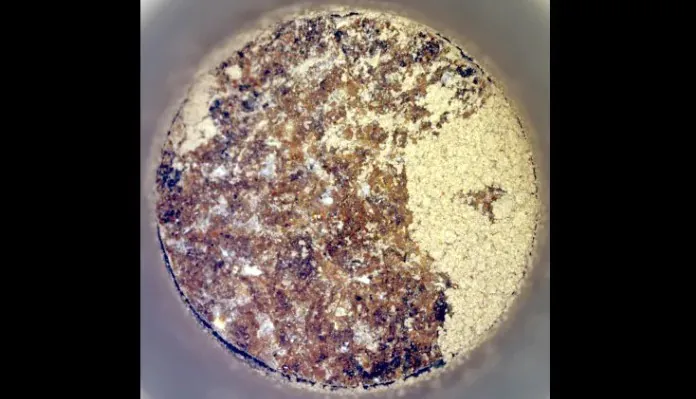© ROOT-NATION.com - Use of content is permitted with a backlink.
The latest sample, taken by NASA’s Perseverance rover, offers new clues about Lake Crater and the lake that may have once housed it. Analysis of instruments on board the rover indicates that this sample was in the water for a long period in the past (perhaps part of an ancient Martian beach). This sample is the 24th in the rover’s collection, which currently includes 21 tubes of rock, two of regolith, and one of Martian air.

“Simply put, this is exactly the kind of rock we were hoping to find when we decided to explore Jezero Crater,” says the Perseverance team. – Almost all the minerals in the rock we just selected were formed in water. On Earth, minerals formed in water are often good at trapping and preserving ancient organic materials and biosignatures. The rock may even tell us about the climatic conditions on Mars that were present when it formed.”
The presence of these specific minerals is considered promising for preserving evidence of an ancient, still habitable environment on Mars. Such collections of minerals are important in guiding scientists to the most valuable samples for further return to Earth as part of the Mars Sample Return campaign.
Dubbed Bunsen Peak, the rock has intrigued scientists because the outcrop stands out against the surrounding terrain and has an interesting texture. They were also interested in the vertical surface of the Bunsen peak with a good cross-section of the rock, and because it is not flat, it is less dusty and easier to study with scientific instruments.
Before taking the sample, Perseverance scanned the rock with the SuperCam spectrometers and the PIXL X-ray spectrometer, short for Planetary Instrument for X-ray Lithochemistry. The rover then used a rotor on the end of a robotic arm to grind (or abrade) part of the surface and scan the rock again. As a result, it turned out that Bunsen Peak consists of approximately 75% of carbonate granules cemented with almost pure silica.

“Silica and carbonate particles appear microcrystalline, which makes them extremely effective in capturing and preserving signs of microbial life that could have once lived in this environment,” the scientists say. – This makes this sample excellent for studying the biosignature if it is returned to Earth. Additionally, this sample may be one of the oldest objects collected by Perseverance, which is important because Mars was most habitable early in its history.”
The interesting sample from Bunsen Peak is the third that Perseverance has collected during its exploration of the geological area called the Margin Unit, which covers the inner rim of Lake Crater. “We are still exploring the region and collecting data, but already the results can confirm our hypothesis that the rocks here were formed on the shores of an ancient lake,” the scientists note.

The rover is moving to the westernmost part. At the base of Jezero Crater is an area called Bright Angel, which is of interest to the science team because it may offer the first encounter with the much older rocks that make up the crater rim. After exploring this area, Perseverance will begin a months-long ascent to the top of the crater.
Read also:
- NASA and Boeing have postponed the first manned flight of the Starliner to early May
- NASA’s VIPER mission is one step closer to launch


